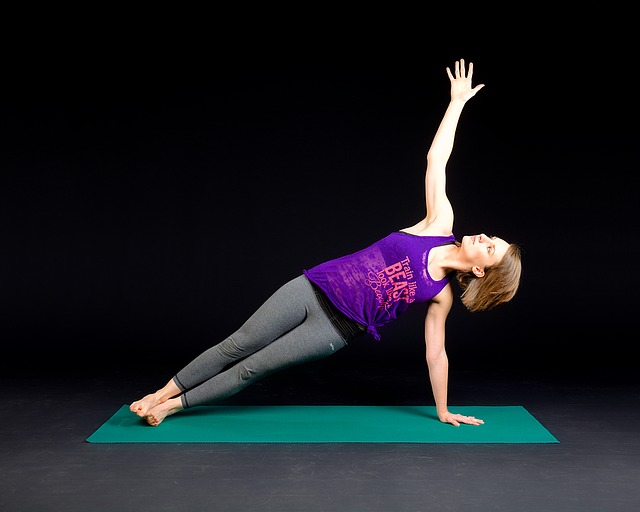Back pain is a widespread disease, especially in the population over forty and fifty years of age. It is estimated that around 80 percent of the entire population will suffer from back pain in their lifetime. This is due to the fact that over the years, the body and in particular the back acquires a stiffness that causes more and more significant discomfort and pain.

And it cannot be forgotten that lifestyle has a great influence, especially when the usual thing is to have professional activities with excessive sedentary lifestyle and stress, to which is added the lack of physical exercise and bad eating habits that in many cases entail some type of overweight, which in turn puts even more strain on your back.
The progressive stiffness of the joints of the spine, especially in the lower back, and the factors mentioned also cause increasing muscle weakness, which in short, makes us feel back pain that seems like it will never go away.
However, it is possible to minimize these pains and the problems that cause them in a very effective way, through various back stretching exercises that will strengthen and tone the bones and muscles of the back.
Therefore, below we give you a series of proposals on how to do back stretching based on routines of about ten minutes a day that will make you notice an improvement in a few days regarding that stiffness and weakness and at the same time the pain in your back.
Four problems and four solutions
There are four different problems that occur in the back and cause pain as a result of lifestyle and habitual poor posture: One is the tension on the large muscles that support the spine, which cause what physiotherapists call a shearing effect when the spine loses its correct curvature over the years, leading to an unnatural stretching of the largest and most important muscles of the back.
Second, and related to this shearing of the large muscles, is the tension suffered by the small postural muscles. These muscles form a kind of vertical braid surrounding the vertebrae that work all day, except when we sleep and are in deep sleep. The tensions they receive lead to the vertebrae shortening and crushing against each other.
Another important problem is spinal ankylosing. In everyday life we do not stretch normally and continuously, and we hardly rotate the spine. In the end, many vertebrae are immobile all the time, forcing those that are close to them to have more mobility, which is also not beneficial. Gradually, the vertebrae lose flexibility.
And there is also the weakening of the muscles that support the spine and that also form a kind of band around the abdomen in front and behind. When that muscle layer is in good condition, it tenses when we move and put the spine into action, but over time, lack of exercise and being overweight take a few microseconds to accompany the vertebrae in the movements of lean, turn or turn, causing tension in the lower back that will cause us pain.
exercises for large muscles
There are several exercises for this type of pain and tension: 1. Standing, raise your arm and stretch your hand as if you were going to touch the ceiling of the room. At the same time you have to step hard, while trying to keep your back straight. This exercise can be done for one to two minutes with each arm. 2. While standing, take a couple of steps back and then move one leg forward and lean your body forward so that your back is straight. The arms are stretched forming a straight and continuous line with the trunk and the opposite leg. It is also done one or two minutes with each leg.
Exercises for the postural muscles
Here it will be necessary to lie down on a mat or carpet, placing the body perpendicular to a wall where the feet will be placed high. First of all, you have to lie on the mat on the floor, face up, with your arms at a 45-degree angle with respect to your trunk and with your palms facing up. You have to bend your legs and raise your knees, and move your chin towards your chest. All this must be done gently. Now you have to raise your feet and support them against the wall, until you notice some tension, but without forcing. You have to stay in this position for five minutes.
Another exercise consists of continuing with the previous position, lying on your back on the floor, now you have to stretch your legs but without separating the lower back from the mat or floor. At that point you have to spread your legs out and stretch the tops of your feet forward, and stay in this position for another five minutes.
Exercises against stiffness
To fight against the lack of flexibility of the vertebrae, we will stand up, in front of the mat or mat, and we will lower our heads as much as we can, but without forcing. Then, we have to bend our back as if we were rolling on our belly, until we drop gently to our knees on the mat, where we will sit on our heels together.
We will remain like this, and without taking off the thighs from the calves, we will continue bending the spine, until placing the head on the knees. All this must be done without forcing any position. At this time we will take three deep breaths.
Next, we get up and get on our knees and with our hands on the mat, mat or the floor itself. In that posture. Then, we take in air while lifting the chin and lowering the lower back, to continue with the expulsion of air while we lower the chin and raise the lower back. It is recommended to perform these exercises in a row for five or ten minutes.
Exercises for activation and strengthening
To combat the weakening of the muscles that form the environment of the spine, we have several exercises to perform on a daily basis.
We will begin by placing ourselves on the mat or support that we have, completely stretched out on it, with the forearms on it and nailing the tips of the feet on the ground and the head forming a horizontal line with the body. Then we will lift the buttocks as much as we can without stressing anything, bending the feet on their tips. We’ll stay like this for a couple of minutes.
We will add some complexity to the exercise by lifting one leg and holding it up for a minute, and then the other. Next, in the same stretched position on the mat, we will lean on our hands, forming a triangle with our legs and the ground. Again, we will raise one leg and then another, for a minute. If you can’t stand it, you should lie down on the mat and rest for ten seconds and do the exercise again.
Finally, we will place ourselves in the same position, but on our side, lying down and leaning on our forearm, for example, the right one, and the legs and feet together. We must, now, raise the trunk leaving a gap between our armpit and the ground, and hold on for a minute. If our physical form allows it, we can increase it by lifting one leg and forming a scissors for another minute.

















